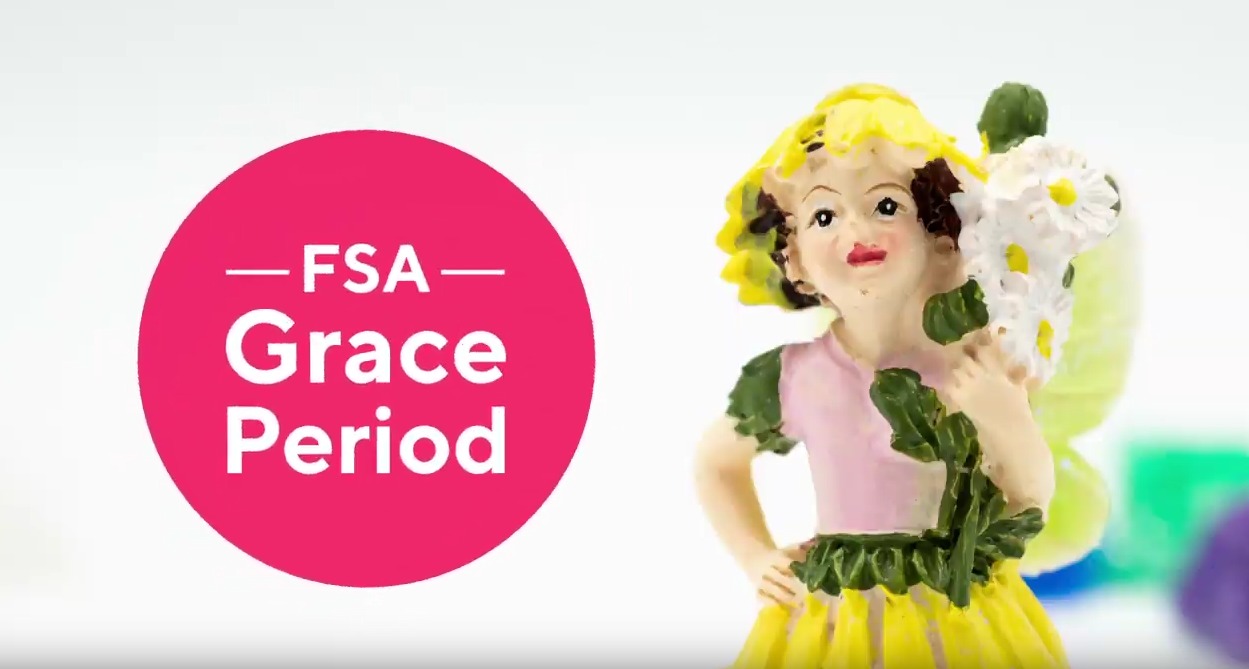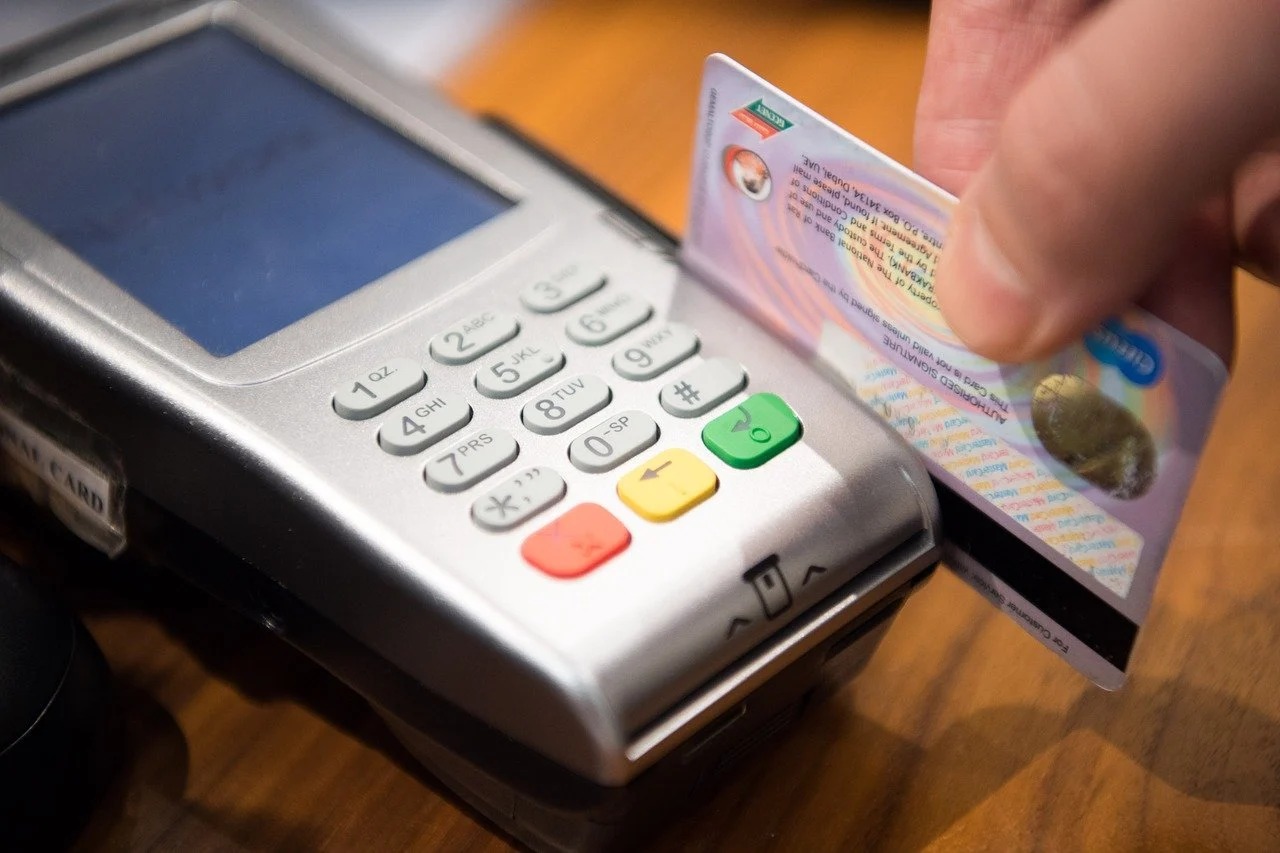Home>Finance>How Soon After Bankruptcy Can I Get A Credit Card


Finance
How Soon After Bankruptcy Can I Get A Credit Card
Modified: February 21, 2024
Looking to rebuild your finances after bankruptcy? Find out how soon you can get a credit card and start your journey towards financial recovery.
(Many of the links in this article redirect to a specific reviewed product. Your purchase of these products through affiliate links helps to generate commission for LiveWell, at no extra cost. Learn more)
Table of Contents
- Introduction
- Understanding Bankruptcy and Credit Cards
- The Impact of Bankruptcy on Credit Card Eligibility
- Types of Credit Cards Available After Bankruptcy
- Factors to Consider Before Applying for a Credit Card After Bankruptcy
- Rebuilding Credit After Bankruptcy
- How Soon Can I Apply for a Credit Card After Bankruptcy?
- Steps to Take Before Applying for a Credit Card
- Mistakes to Avoid After Bankruptcy
- Conclusion
Introduction
Bankruptcy is a financial distress that can happen to anyone, leaving individuals reeling from the repercussions of overwhelming debt. It can be a challenging and emotionally draining experience to navigate through the process and rebuild one’s financial standing. One aspect that often comes to mind after bankruptcy is the ability to obtain a credit card again.
Understanding the relationship between bankruptcy and credit cards is crucial for individuals looking to regain control of their financial lives. This article aims to shed light on the various aspects of obtaining a credit card post-bankruptcy, including the types available, the time frame involved, and factors to consider before applying.
Bankruptcy typically results in a significant negative impact on one’s credit score, making it difficult to qualify for credit cards or obtain favorable terms. However, it is not an insurmountable barrier. Many financial institutions offer credit card options specifically designed for individuals who have gone through bankruptcy. These cards are often referred to as “rebuilding” or “secured” credit cards.
To determine eligibility for these types of credit cards, it is important to understand the different bankruptcy chapters. Chapter 7 bankruptcy, also known as liquidation bankruptcy, involves the liquidation of assets to repay creditors. Chapter 13 bankruptcy, on the other hand, allows individuals to restructure and repay their debts over a specified period of time. The type of bankruptcy you have filed will impact your ability to obtain a credit card and the timing of when you can apply.
It is crucial to note that rebuilding credit after bankruptcy is a gradual process that requires discipline, patience, and responsible financial habits. While it may take time, diligently working towards improving your credit can open doors to better financial opportunities, including the ability to obtain credit cards with more favorable terms.
Next, let’s delve deeper into the specific factors that play a role in determining your eligibility for a credit card after bankruptcy. Understanding these factors can help you make informed decisions and take the necessary steps to rebuild your credit.
Understanding Bankruptcy and Credit Cards
Bankruptcy is a legal process that allows individuals or businesses to seek relief from overwhelming debt. It provides a fresh start by discharging or restructuring debts. While bankruptcy provides financial relief, it also has significant implications for one’s creditworthiness and access to credit cards.
After filing for bankruptcy, your credit score will likely take a significant hit. A lower credit score makes it more challenging to qualify for traditional credit cards with favorable terms and interest rates. Lenders are reluctant to extend credit to individuals who have a history of bankruptcy due to the perceived higher risk.
However, this doesn’t mean that access to credit cards is completely out of reach. Financial institutions recognize the need for individuals to rebuild their credit after bankruptcy and offer specialized credit cards to help with the process.
One such option is a secured credit card. A secured credit card requires a security deposit, which serves as collateral, mitigating the risk for the issuer. This deposit typically determines your credit limit. Secured credit card issuers report your payment history to credit bureaus, helping you rebuild your credit when used responsibly.
Another type of credit card to consider is the subprime credit card. These cards are designed for individuals with low credit scores or a history of bankruptcy. While they may come with higher interest rates and fees, they offer an opportunity to demonstrate responsible credit use and rebuild your credit over time.
It is important to note that not all credit card options after bankruptcy are created equal. Some predatory lenders may target individuals who are desperate to rebuild their credit and charge exorbitant fees and interest rates. It is crucial to do your research and choose reputable financial institutions that offer transparent terms and reasonable rates.
When considering credit cards after bankruptcy, it’s essential to be mindful of your financial habits. Use the credit card responsibly and make timely payments to establish a positive payment history. Avoid maxing out the credit limit and aim to keep your credit utilization ratio low, ideally below 30%.
Rebuilding credit takes time, patience, and discipline. It requires a consistent effort to improve your credit score and demonstrate to lenders that you are a responsible borrower. The next section will discuss the impact of bankruptcy on credit card eligibility and factors to consider before applying for a credit card after bankruptcy.
The Impact of Bankruptcy on Credit Card Eligibility
Filing for bankruptcy has a significant impact on your creditworthiness, making it more challenging to qualify for credit cards and other forms of credit. The impact of bankruptcy on credit card eligibility can vary depending on the type of bankruptcy filed and its status.
Chapter 7 bankruptcy, also known as liquidation bankruptcy, involves the liquidation of assets to repay creditors. A Chapter 7 bankruptcy can stay on your credit report for up to 10 years from the date of filing. During this time, lenders may view you as a high-risk borrower, making it difficult to obtain credit cards with favorable terms.
Chapter 13 bankruptcy, also known as wage earner’s bankruptcy, allows individuals to restructure and repay their debts over a specified period of time. A Chapter 13 bankruptcy typically remains on your credit report for seven years from the date of filing. While it may be easier to obtain credit after a Chapter 13 bankruptcy, lenders will still consider your overall financial situation, including your repayment plan and current income.
Having a bankruptcy on your credit report may make it challenging to qualify for traditional credit cards. However, there are specialized credit cards designed for individuals with a history of bankruptcy or poor credit scores. These credit cards are often referred to as “rebuilding” or “secured” credit cards.
Rebuilding credit cards typically require a security deposit, which serves as collateral for the issuer. Your credit limit is typically equal to the amount of the security deposit. By making regular, on-time payments and demonstrating responsible credit use, you can gradually improve your credit score and increase your chances of qualifying for traditional credit cards in the future.
When considering credit cards after bankruptcy, it is important to be aware that some lenders may engage in predatory practices that could worsen your financial situation. Watch out for high fees, excessive interest rates, and hidden charges. Compare card offers, read the terms and conditions carefully, and choose reputable financial institutions that offer reasonable rates and transparent terms.
It’s crucial to note that your credit card eligibility after bankruptcy will also depend on your current financial situation and income. Lenders will want to see evidence of stable employment and a steady income stream to ensure that you can handle the credit responsibly.
Understanding the impact of bankruptcy on credit card eligibility is essential for making informed decisions and setting realistic expectations. The upcoming sections will delve into the types of credit cards available after bankruptcy and the factors you should consider before applying for a credit card.
Types of Credit Cards Available After Bankruptcy
After going through the process of bankruptcy, it’s important to rebuild your credit and regain your financial footing. Thankfully, there are credit card options available specifically designed for individuals who have filed for bankruptcy or have a less-than-perfect credit history.
1. Secured Credit Cards: Secured credit cards are an excellent option for rebuilding credit after bankruptcy. These cards require a security deposit, which serves as collateral for the issuer. In most cases, your credit limit will be equal to the amount of the deposit. Secured cards function like regular credit cards, allowing you to make purchases and build a positive payment history. By making timely payments and responsibly managing your credit limit, you can improve your credit score over time and qualify for traditional credit cards with better terms.
2. Subprime Credit Cards: Subprime credit cards are specifically designed for individuals with low credit scores or a history of bankruptcy. While these cards often come with higher interest rates and fees, they provide an opportunity to rebuild credit when used responsibly. It’s important to carefully read the terms and conditions, as some subprime credit cards may have hidden charges or predatory practices. Look for reputable issuers and compare offers to find the best option for your needs.
3. Credit-Building Loans: In addition to credit cards, credit-building loans can also be an effective tool for rebuilding credit after bankruptcy. These loans typically have a small loan amount and require regular, on-time payments. By making consistent payments, you can demonstrate responsible borrowing behavior and improve your credit score.
4. Retail Store Credit Cards: Retail store credit cards are often easier to qualify for compared to traditional credit cards. These cards allow you to make purchases at specific retailers and offer an opportunity to rebuild credit. However, it’s important to use these cards responsibly and avoid overspending, as retail store credit cards often come with high interest rates.
5. Co-Signed or Authorized User Cards: If you have a trusted friend or family member with good credit, you may consider becoming an authorized user on their credit card or having them co-sign on a credit card for you. Being an authorized user or having a co-signer with good credit can help you access credit and rebuild your own credit history. However, it’s crucial to ensure that both parties are aware of the responsibilities and potential risks involved.
It’s important to approach these credit card options with caution and responsibility. Make sure to make payments on time, keep your credit utilization low, and avoid taking on more debt than you can comfortably manage. With responsible financial habits, these credit cards can be invaluable tools in rebuilding your credit and regaining your financial stability.
Now that we’ve explored the types of credit cards available after bankruptcy, let’s delve into the factors you should consider before applying for a credit card.
Factors to Consider Before Applying for a Credit Card After Bankruptcy
Applying for a credit card after bankruptcy requires careful consideration and evaluation of various factors. Before you begin the application process, here are some key factors to keep in mind:
1. Rebuilding Your Credit Score: One of the primary reasons for obtaining a credit card after bankruptcy is to rebuild your credit score. It’s crucial to choose a credit card that reports your payment history to the credit bureaus. Regular, on-time payments and responsible credit card usage can gradually improve your credit score over time. Look for credit cards with this feature to maximize the potential for rebuilding your credit score.
2. Interest Rates and Fees: Credit cards for individuals with a history of bankruptcy often come with higher interest rates and fees. Take the time to review the terms and conditions of various credit card offers to understand the interest rates, annual fees, late payment fees, and any other charges. Compare the options available and choose a credit card with reasonable rates and fees that align with your financial situation.
3. Credit Limit: The credit limit on your credit card plays a role in managing your credit utilization ratio, which is a significant contributor to your credit score. A higher credit limit can provide greater flexibility and help keep your credit utilization ratio low. However, be cautious about credit limits that are too high, as they may tempt you to overspend and potentially lead to financial trouble.
4. Secured vs. Unsecured: Consider whether you are comfortable with a secured credit card, which requires a security deposit, or if you qualify for an unsecured credit card. Secured credit cards are often more accessible for individuals rebuilding their credit after bankruptcy. Unsecured credit cards, on the other hand, don’t require a security deposit but may have stricter eligibility criteria.
5. Credit Card Issuer’s Reputation: It’s crucial to choose a reputable credit card issuer that is known for fair practices and providing good customer service. Research the issuer’s reputation, read customer reviews, and look for transparency in their terms and conditions. Avoid predatory lenders who may take advantage of individuals in vulnerable financial situations.
6. Your Personal Financial Situation: Assess your personal financial situation before applying for a credit card. Consider factors such as your income, monthly expenses, and debt obligations. It’s essential to choose a credit card that aligns with your current financial capabilities and allows you to make payments comfortably. Avoid taking on too much debt or applying for multiple credit cards simultaneously, as this can negatively impact your credit health.
7. Responsible Credit Card Usage: Before applying for a credit card, it’s crucial to evaluate your financial habits and commitment to responsible credit card usage. Develop a budget and spending plan, ensuring that you can make regular, on-time payments. It’s important to use your credit card responsibly, avoid maxing out your credit limit, and pay off your balance in full whenever possible to avoid accruing unnecessary interest charges.
By considering these factors before applying for a credit card after bankruptcy, you can make an informed decision that aligns with your financial goals and helps you rebuild your credit wisely. Take the time to research, compare options, and choose a credit card that sets you on the path to financial recovery.
Next, let’s explore the process of rebuilding credit after bankruptcy and how soon you can apply for a credit card.
Rebuilding Credit After Bankruptcy
Rebuilding credit after bankruptcy is a gradual process that requires patience, discipline, and responsible financial habits. While bankruptcy can have a significant impact on your credit score, it’s important to remember that it is not the end of your financial journey. With a strategic approach, you can begin rebuilding your credit and regaining your financial stability.
1. Review Your Credit Report: Start by obtaining a copy of your credit report from each of the major credit bureaus: Experian, Equifax, and TransUnion. Review the report carefully to ensure its accuracy. If you find any errors or inaccuracies, file a dispute and have them corrected. Regularly monitoring your credit report allows you to track your progress and identify areas for improvement.
2. Create a Budget: Developing a budget is essential to rebuilding your credit. Take the time to analyze your income and expenses to understand where your money is going. Allocate funds towards repaying any outstanding debts and prioritize essential expenses. By sticking to a budget, you can ensure that you have enough funds to make timely credit card payments and avoid accumulating further debt.
3. Make Timely Payments: Timely payments are a crucial factor in rebuilding your credit score. Pay all your bills, including credit card bills, on time each month. Create reminders or set up automatic payments to ensure you never miss a payment. Consistent on-time payments demonstrate responsible credit usage and can have a positive impact on your credit score over time.
4. Keep Credit Utilization Low: Credit utilization, the percentage of your available credit that you are using, is another important factor that affects your credit score. Aim to keep your credit utilization ratio below 30%. Utilizing a high percentage of your available credit can negatively impact your credit score. Consider making multiple small payments throughout the month to keep your balance low and avoid maxing out your credit cards.
5. Diversify Your Credit Mix: Having a mix of different types of credit can positively impact your credit score. While it may be challenging to obtain different types of credit immediately after bankruptcy, consider various options such as secured credit cards, credit-building loans, or becoming an authorized user on someone else’s credit card. This shows lenders that you are capable of managing different forms of credit responsibly.
6. Monitor Your Credit Score: Keeping an eye on your credit score allows you to track your progress in rebuilding your credit. There are many free credit monitoring tools available that provide regular updates on your score. Monitoring your credit score can help you identify areas where improvements are needed and provide motivation to continue practicing responsible financial habits.
It’s important to note that rebuilding credit takes time. Depending on the severity of your bankruptcy and other financial factors, it may take several years to fully recover. However, by consistently following these steps and maintaining responsible credit habits, you can gradually rebuild your credit and improve your financial standing.
Now that we have discussed the importance of rebuilding credit after bankruptcy, let’s explore how soon you can apply for a credit card after bankruptcy and the steps you should take before doing so.
How Soon Can I Apply for a Credit Card After Bankruptcy?
The timing of when you can apply for a credit card after bankruptcy depends on the type of bankruptcy you filed and your individual financial circumstances. It’s important to understand that there is no universal timeline for when you can apply, as each situation is unique. However, here are some general guidelines to consider:
Chapter 7 Bankruptcy: If you have filed for Chapter 7 bankruptcy, which involves the liquidation of assets to repay creditors, you may be eligible to apply for a credit card shortly after your bankruptcy is discharged. Typically, this occurs within a few months of filing. However, it’s crucial to assess your financial stability before applying for new credit. Take the time to prioritize rebuilding your financial health and ensure that you can manage credit responsibly before taking on new debt.
Chapter 13 Bankruptcy: If you filed for Chapter 13 bankruptcy, which involves creating a repayment plan to pay off your debts over a specified period of time, you may have to wait until your bankruptcy repayment plan is complete before being eligible to apply for new credit. This can take several years, as Chapter 13 plans typically last between three to five years. During this time, focus on making timely payments on your repayment plan and working towards improving your financial situation.
Regardless of the type of bankruptcy you have filed, it is crucial to take the necessary steps to rebuild your credit before applying for a new credit card. This includes establishing a track record of responsible financial habits, making timely payments on existing debts, and practicing good money management.
Additionally, it’s important to note that as you start rebuilding your credit, you may be eligible to apply for secured credit cards or credit cards specifically designed for individuals with a history of bankruptcy or poor credit scores. These credit cards can serve as a valuable tool in rebuilding your credit and establishing positive credit history.
Before applying for a credit card after bankruptcy, take the time to assess your overall financial situation. Evaluate your income, expenses, and any outstanding debts. Consider working with a financial advisor or credit counseling agency to develop a strategy for rebuilding your credit and managing your finances responsibly.
Remember, the key to successfully applying for a credit card after bankruptcy is demonstrating responsible financial habits and proving to lenders that you are a reliable and low-risk borrower. By taking the necessary steps to rebuild your credit and improving your overall financial health, you can increase your chances of obtaining a credit card with better terms and conditions.
Now that we’ve explored the timing of applying for a credit card after bankruptcy, let’s discuss the steps you should take before applying and the common mistakes to avoid during the process.
Steps to Take Before Applying for a Credit Card
Before applying for a credit card after bankruptcy, it’s important to take certain steps to ensure that you are prepared and increase your chances of approval. Here are some key steps to consider:
1. Review Your Credit Report: Obtain a copy of your credit report from each of the major credit bureaus (Experian, Equifax, and TransUnion) and carefully review it for any errors or inaccuracies. If you find any discrepancies, file a dispute to have them corrected. It’s crucial to start with accurate information before applying for new credit.
2. Assess Your Financial Situation: Evaluate your current financial standing before applying for a credit card. Review your income, expenses, outstanding debts, and credit utilization. Determine if you have enough disposable income to meet your monthly payments and responsibly manage additional credit. Taking a realistic look at your finances ensures that you don’t take on more debt than you can handle.
3. Budget and Plan: Create a budget to track your income and expenses. Ensure that you have enough funds to cover your essential living expenses, make payments towards existing debts, and comfortably manage a new credit card. A budget helps you avoid overspending and demonstrates responsible financial habits to lenders.
4. Strengthen Your Credit: Take steps to strengthen your credit before applying for a credit card. This includes making all your bill payments on time, paying down outstanding debts, and reducing your credit utilization ratio. Responsible credit behavior shows lenders that you are managing your finances well and increases your chances of approval.
5. Research Different Credit Card Options: Research various credit card options available to individuals with a history of bankruptcy or poor credit scores. Look for credit cards specifically designed for rebuilding credit or secured credit cards that require a deposit as collateral. Compare the terms, interest rates, fees, and credit limits of different cards to find the one that best suits your needs.
6. Establish Good Banking Relationships: Building a solid relationship with a bank or financial institution can be beneficial when applying for a credit card after bankruptcy. If you have a checking or savings account with a bank, consider applying for a credit card through that institution. A preexisting relationship may increase your chances of approval.
7. Practice Patience: Rebuilding your credit takes time, and applying for a credit card immediately after bankruptcy may not yield the desired results. It’s important to remain patient and give yourself time to strengthen your credit profile. Continuously work on improving your financial habits and credit score, and apply for a credit card when you feel more confident in your ability to manage credit responsibly.
By taking these steps before applying for a credit card, you can increase your chances of approval and set yourself up for success in rebuilding your credit. Remember to borrow responsibly, make payments on time, and keep your credit utilization low to continue improving your credit profile.
Now, let’s discuss the common mistakes to avoid when applying for a credit card after bankruptcy.
Mistakes to Avoid After Bankruptcy
After going through the process of bankruptcy, it’s crucial to learn from past financial mistakes and avoid common pitfalls that can hinder your progress in rebuilding your credit. Here are several critical mistakes to avoid after bankruptcy:
1. Taking on Too Much Debt: One of the main goals after bankruptcy is to rebuild your credit. However, it’s important to resist the temptation of taking on excessive amounts of debt. Applying for multiple credit cards or loans simultaneously can raise red flags for lenders and negatively impact your creditworthiness. Start with a single credit card and gradually increase your credit with responsible usage.
2. Ignoring Credit Card Payments: Making timely payments is crucial for rebuilding your credit after bankruptcy. Failing to pay your credit card bills on time or missing payments can result in late fees, increased interest rates, and damage to your credit score. Set up reminders or automatic payments to ensure that you don’t forget to make your payments promptly.
3. Maxing Out Credit Cards: It’s essential to keep your credit utilization low, which is the percentage of your available credit that you use. Maxing out your credit cards can negatively impact your credit score and indicate financial instability to lenders. Aim to keep your credit utilization below 30% and strive to pay off your credit card balances in full each month.
4. Applying for Too Many Credit Cards: Applying for multiple credit cards within a short period can raise concerns for lenders. Each credit card application results in a hard inquiry on your credit report, which can temporarily lower your credit score. Be selective in the credit cards you apply for and space out your applications to avoid potential negative impacts on your creditworthiness.
5. Falling for Predatory Lending Practices: After bankruptcy, it’s important to be cautious of predatory lenders who may take advantage of individuals with a recent bankruptcy. These lenders often offer credit cards with high fees, exorbitant interest rates, and hidden charges. Read the terms and conditions carefully, compare different credit card options, and choose reputable financial institutions that offer fair terms and transparent practices.
6. Neglecting to Monitor Your Credit Report: Regularly monitoring your credit report is essential for rebuilding your credit after bankruptcy. It allows you to track your progress, ensure the accuracy of the information, and detect any potential fraud or errors. Take advantage of free credit monitoring services or request a free copy of your credit report at least once a year from each major credit bureau.
7. Not Learning from Past Financial Mistakes: Bankruptcy provides an opportunity to evaluate and learn from past financial mistakes. It’s important to identify the root causes that led to bankruptcy and make necessary changes to your financial habits. Develop a budget, practice responsible spending, and make informed financial decisions to prevent a recurrence of financial difficulties.
By avoiding these common mistakes and maintaining responsible financial habits, you can rebuild your credit after bankruptcy effectively. Remember that rebuilding credit takes time and patience, so stay focused on your long-term financial goals and make decisions that align with your financial well-being.
Now, let’s wrap up our discussion on credit cards after bankruptcy and summarize the key points we’ve covered.
Conclusion
Bankruptcy can be a challenging and stressful experience, but it doesn’t have to define your financial future. Rebuilding credit after bankruptcy is a gradual process that requires patience, discipline, and responsible financial habits. By taking proactive steps and making informed decisions, you can regain control of your financial life and pave the way for a brighter future.
Understanding the impact of bankruptcy on credit card eligibility is crucial. While obtaining a credit card after bankruptcy may initially seem daunting, there are options available specifically tailored for individuals in your situation. Secured credit cards, subprime credit cards, and other credit-building tools can help you demonstrate responsible credit use and rebuild your credit over time.
Prior to applying for a credit card after bankruptcy, it’s important to assess your financial situation, review your credit report, and develop a realistic budget. Strengthening your credit profile through timely payments, responsible credit utilization, and diversifying your credit mix will increase your chances of approval for better credit cards with more favorable terms.
Remember to avoid common mistakes such as taking on excessive debt, missing payments, and falling for predatory lending practices. Practice responsible credit usage and actively monitor your credit report for accuracy and potential fraud.
Rebuilding credit after bankruptcy is a journey that requires commitment and perseverance. While there is no fixed timeline for when you can apply for a credit card after bankruptcy, it’s important to focus on improving your financial health and gradually rebuilding your credit profile. By doing so, you can regain your financial stability, access better credit opportunities, and move towards your financial goals.
As you navigate through the process, consider seeking guidance from financial advisors or credit counseling agencies who can provide personalized advice and support. Remember, everyone’s financial journey is unique, and with determination and responsible financial habits, you can rebuild your credit and create a more secure financial future.














